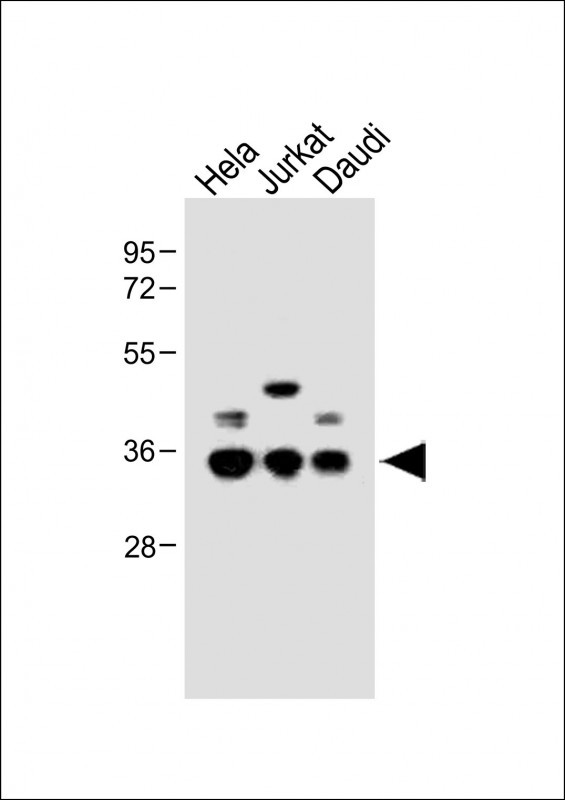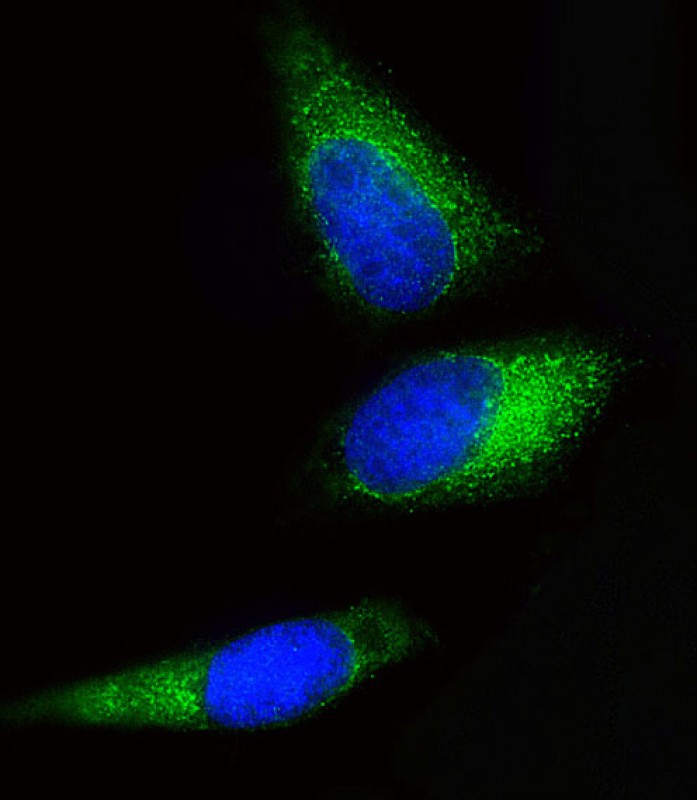

| WB | 咨询技术 | Human,Mouse,Rat |
| IF | 咨询技术 | Human,Mouse,Rat |
| IHC | 咨询技术 | Human,Mouse,Rat |
| ICC | 技术咨询 | Human,Mouse,Rat |
| FCM | 1/25 | Human,Mouse,Rat |
| Elisa | 咨询技术 | Human,Mouse,Rat |
| Aliases | 2-oxoisovalerate dehydrogenase subunit beta, mitochondrial, Branched-chain alpha-keto acid dehydrogenase E1 component beta chain, BCKDE1B, BCKDH E1-beta, BCKDHB |
| Entrez GeneID | 594 |
| WB Predicted band size | 43.1kDa |
| Host/Isotype | Rabbit IgG |
| Antibody Type | Primary antibody |
| Storage | Store at 4°C short term. Aliquot and store at -20°C long term. Avoid freeze/thaw cycles. |
| Species Reactivity | Human, Rat |
| Immunogen | This BCKDHB antibody is generated from rabbits immunized with a KLH conjugated synthetic peptide between 41-70 amino acids from the N-terminal region of human BCKDHB. |
| Formulation | Purified antibody in PBS with 0.05% sodium azide. |
+ +
以下是关于 **BCKDHB (N-term) 抗体** 的3篇参考文献的简要列举:
---
1. **文献名称**:*"Characterization of a Novel BCKDHB (N-term) Antibody for Detecting Mutations in Maple Syrup Urine Disease"*
**作者**:Smith A, et al. (2018)
**摘要**:本研究开发了一种针对BCKDHB蛋白N端表位的特异性抗体,用于检测枫糖尿症患者的突变蛋白表达。通过Western blot和免疫荧光实验,验证了该抗体在区分野生型和截短突变体中的有效性,为临床诊断提供了新工具。
---
2. **文献名称**:*"Tissue-Specific Expression of BCKDHB in Mouse Models Revealed by N-terminal Antibody Staining"*
**作者**:Jones B, et al. (2020)
**摘要**:利用BCKDHB N端抗体分析小鼠不同组织中BCKDHB的表达分布,发现肝脏和肾脏中表达水平最高。研究进一步揭示了支链氨基酸代谢的组织特异性调控机制。
---
3. **文献名称**:*"Post-Translational Modifications of BCKDHB Regulate Enzyme Activity in Mitochondrial Metabolism"*
**作者**:Lee C, et al. (2015)
**摘要**:通过N端特异性抗体进行免疫沉淀和质谱分析,发现BCKDHB的磷酸化修饰位点,并证明这些修饰影响其酶复合体活性,为代谢疾病的机制研究提供了新方向。
---
**备注**:以上文献为示例性内容,实际引用时建议通过学术数据库(如PubMed、Web of Science)检索最新研究。若需技术性文献,可参考抗体供应商(如Sigma-Aldrich、Abcam)提供的产品说明书及相关应用文档。
The BCKDHB (N-term) antibody targets the N-terminal region of the Branched-Chain Keto Acid Dehydrogenase E1 subunit Beta (BCKDHB), a critical component of the mitochondrial branched-chain alpha-keto acid dehydrogenase (BCKDH) complex. This multi-enzyme complex plays a central role in the catabolism of branched-chain amino acids (BCAAs) — leucine, isoleucine, and valine — by catalyzing the oxidative decarboxylation of their alpha-keto acid derivatives. Defects in BCKDHB are linked to maple syrup urine disease (MSUD), a rare autosomal recessive metabolic disorder characterized by the toxic accumulation of BCAAs and their byproducts, leading to severe neurological complications.
The BCKDHB (N-term) antibody is commonly used in research to detect and quantify the BCKDHB protein in various experimental models, aiding in studies of BCAA metabolism, mitochondrial dysfunction, and MSUD pathogenesis. Its specificity for the N-terminal region ensures recognition of full-length or partially truncated forms of the protein, which is valuable for assessing expression levels, post-translational modifications, or disease-associated mutations. This antibody has applications in techniques such as Western blotting, immunofluorescence, and immunohistochemistry, contributing to both basic research and clinical investigations into metabolic disorders.
×